The Gospel of John
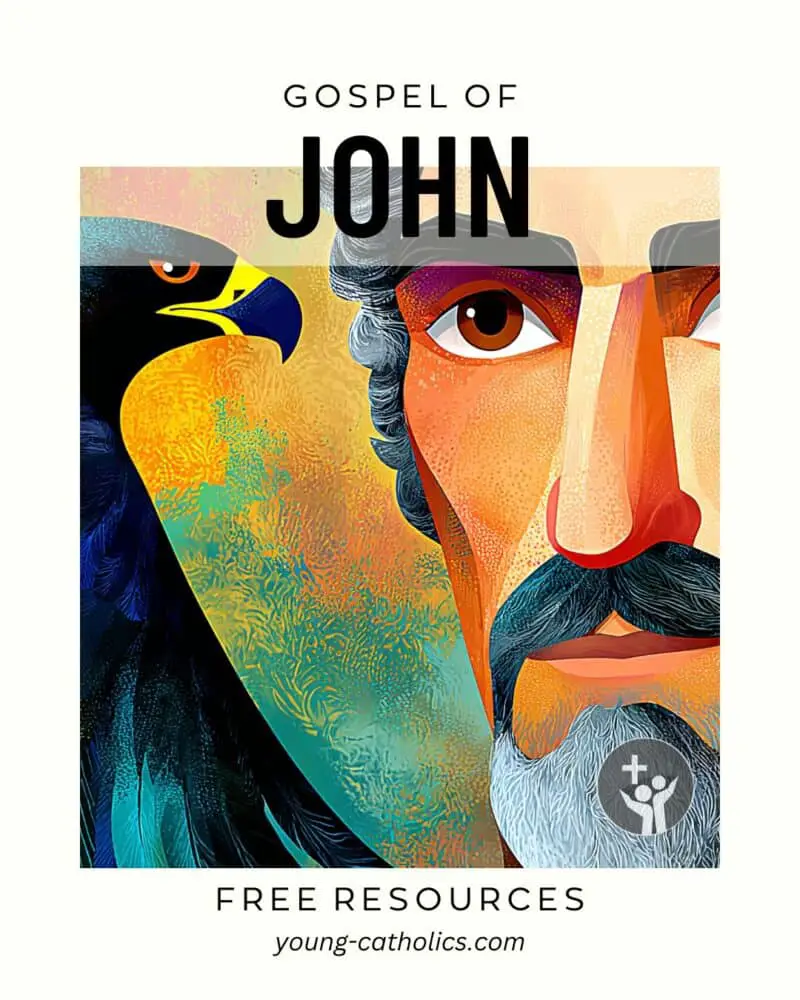
The Gospel of John is the fourth book in the New Testament. It is different from the Gospels of Matthew, Mark, and Luke. Those three tell the story of Jesus in a similar way. John tells the story with a unique style and focus. He wants the reader to see who Jesus really is.
This Gospel begins with a beautiful message about the Word. It says the Word was with God from the beginning and became flesh in Jesus. John wants us to understand that Jesus came from God. Jesus came to bring light and truth to the world.
Throughout the book, John tells us about many signs and teachings of Jesus. He includes stories not found in the other Gospels, like the wedding at Cana and the raising of Lazarus. These signs help people believe that Jesus is the Son of God. John writes so that people may believe and have life in His name.
The Gospel of John also gives us long talks from Jesus. These show His mission and His love for others. John wants us to see the deep relationship between Jesus and the Father. This Gospel invites us to stay close to Jesus and to trust in His words.
Who Wrote This and When?
The Gospel of John was likely written near the end of the first century. Most people think it was written between the years 90 and 100 AD. This was many years after Jesus had lived, died, and risen. By that time, many Christians had already heard the stories of Jesus from the other Gospels.
The author is often called John, the beloved disciple. Some believe he was the Apostle John, one of the twelve. Others think it may have been someone close to him, writing down his memories and teachings. Either way, the writer knew Jesus deeply and wanted others to believe in Him.
This Gospel was written at a time when Christians were facing new challenges. Many Jewish believers were being pushed out of the synagogues. They were starting to worship in new ways and form a new identity as followers of Jesus. This book helped guide them.
The writer speaks clearly about Jesus and what He came to do. He uses strong images like light, bread, and water. He talks about truth and eternal life. The Gospel helped early Christians stay strong in their faith. It still speaks clearly to us today.
A Different Way of Telling the Story
The Gospel of John is not like the other Gospels. It does not follow the same timeline. It leaves out many familiar stories, like Jesus’ birth and the parables. Instead, John shares longer talks and special signs to show who Jesus is.
John uses simple words, but they have deep meaning. He repeats themes like light, life, truth, and love. These words help us understand what Jesus came to bring. He also uses images, like Jesus as the good shepherd or the vine. These pictures help people connect to the message.
The Gospel includes many one-on-one conversations. Jesus speaks with people like Nicodemus, the Samaritan woman, and Pilate. These moments show how Jesus listened and cared for each person. They also help us understand what it means to follow Him.
John also spends more time on the last days of Jesus’ life. Nearly half of the Gospel focuses on the Last Supper and the Passion. This helps us see how much Jesus gave for us and why it matters.
Living Water, True Bread, and the Word Made Flesh
The Gospel of John teaches many truths that are important in Catholic faith. These themes help us understand who Jesus is and how we are called to follow Him. Here are some of the key ideas found in this Gospel.
Jesus is the Word. At the start of the Gospel, John tells us that the Word became flesh and lived among us. This shows that Jesus is more than a teacher. He is the Word of God in human form. This is part of the Catholic teaching about the Incarnation.
John also shows Jesus as the Bread of Life. In chapter 6, Jesus feeds a crowd and then teaches about the Eucharist. He says, “Whoever eats my flesh and drinks my blood has eternal life.” This connects closely to the Mass and our belief in the Real Presence in the Eucharist.
The theme of baptism appears often. Jesus tells Nicodemus that we must be born of water and Spirit. Water is also important when He heals people and washes the disciples’ feet. These remind us of the Sacraments, especially Baptism and Holy Orders.
Finally, John speaks often about love. Jesus gives a new commandment: love one another as I have loved you. He also prays that His followers will be united. These ideas point to the importance of charity, community, and unity in the Church.
The “I Am” Sayings of Jesus
In the Gospel of John, Jesus often says “I am” followed by a simple image. These sayings help us understand who He is and what He offers us. Each one shows a part of His mission and how He cares for people.
Here are the main “I Am” statements:
- I am the bread of life (John 6:35)
Jesus gives us the food we need for eternal life. This is a reference to the Eucharist. - I am the light of the world (John 8:12)
Jesus shows us the way when life feels dark or confusing. - I am the door (John 10:7)
Jesus keeps His people safe and welcomes them in. - I am the good shepherd (John 10:11)
Jesus knows each of us and leads us with love. - I am the resurrection and the life (John 11:25)
Jesus gives hope, even in death. - I am the way, the truth, and the life (John 14:6)
Jesus is the path to the Father. - I am the true vine (John 15:1)
Jesus helps us stay connected to Him and grow in faith.
These sayings are easy to remember. Each one shows how Jesus is close to us and helps us each day.
How the Gospel of John Is Put Together
The Gospel of John is carefully organized. It is not just a collection of stories. It follows a clear plan. Many people divide it into four main parts. Each part has a purpose and helps us understand Jesus more.
- Prologue (John 1:1–18)
This short section introduces the whole Gospel. It tells us that Jesus is the Word and that the Word became flesh. It sets the stage for everything that follows. - Book of Signs (John 1:19–12:50)
In this part, Jesus performs many signs or miracles. These signs help people believe in Him. Some of the signs include turning water into wine, healing the blind man, and raising Lazarus from the dead. - Book of Glory (John 13:1–20:31)
This section focuses on Jesus’ final days. It includes the Last Supper, His teachings to the disciples, His suffering, death, and Resurrection. It shows how Jesus gave glory to the Father by giving His life. - Epilogue (John 21:1–25)
This last chapter tells about Jesus appearing to His disciples after rising from the dead. He talks with Peter and gives him a mission to care for His followers.
Each part builds on the one before it. Together, they help us see who Jesus is and why He came.
Why John Still Matters
The Gospel of John speaks clearly to people today. It helps us see who Jesus is and how we can follow Him. Even though it was written long ago, its message still fits with the world we live in.
John talks a lot about light in the darkness. That is something we all face. When life feels hard or confusing, John reminds us that Jesus is the light. He brings hope and shows us the way.
John also tells us how much Jesus loves each person. Jesus speaks kindly to people who feel lost or left out. That reminds us to treat others with care and respect, no matter who they are.
This Gospel also helps us understand the sacraments and the Church. It reminds us to stay close to Jesus through prayer, Scripture, and the Eucharist. These are things we all still need in our faith today.
John’s Gospel at Mass
The Gospel of John is read often at Catholic Mass. It is not used as much during Ordinary Time as the other Gospels, but it plays a big role in other parts of the Church year.
We hear many parts of John during Lent and Easter. On the third, fourth, and fifth Sundays of Lent in Year A, we hear the stories of the Samaritan woman, the man born blind, and the raising of Lazarus. These readings prepare us for Easter and remind us of Baptism.
During Holy Week, we read John’s account of the Passion on Good Friday. It shows how Jesus gave His life with peace and purpose. It is a quiet and powerful reading that helps us reflect on the cross.
In the Easter season, we hear John’s words again. Many weekday readings come from chapters 13 to 17. These include the Last Supper and Jesus’ final teachings. They help us stay close to Jesus after Easter and remind us of His love.

Christmas: Mass during the Day
The Word Became Flesh
John 1:1-18 tells us who Jesus is and why He came. Before anything was made, He was already with God. Everything in creation came through Him. He is the source of life and light for all people. Even though the world did not recognize Him, He came to bring us closer to God.
This reading reminds us that Jesus came to live among us as a real person. He showed us God’s love in a way we could see and understand. Those who believe in Him become children of God. It also tells us that no one has seen God, but Jesus makes God known. This message is read at Christmas and other special times to help us remember that God is near.

3rd Sunday of Advent Year B
A Voice in the Wilderness
John 1:6-8, 19-28 introduces us to John the Baptist. He was sent by God to prepare people for someone greater. He was not the light but came to point others to the light. He wanted everyone to be ready for the one who was coming.
Religious leaders asked John who he was. He made it clear that he was not the Messiah. He said he was just a voice calling people to get ready. When they asked why he baptized, he explained that someone much greater was coming. This person was already among them, but they did not know Him yet.
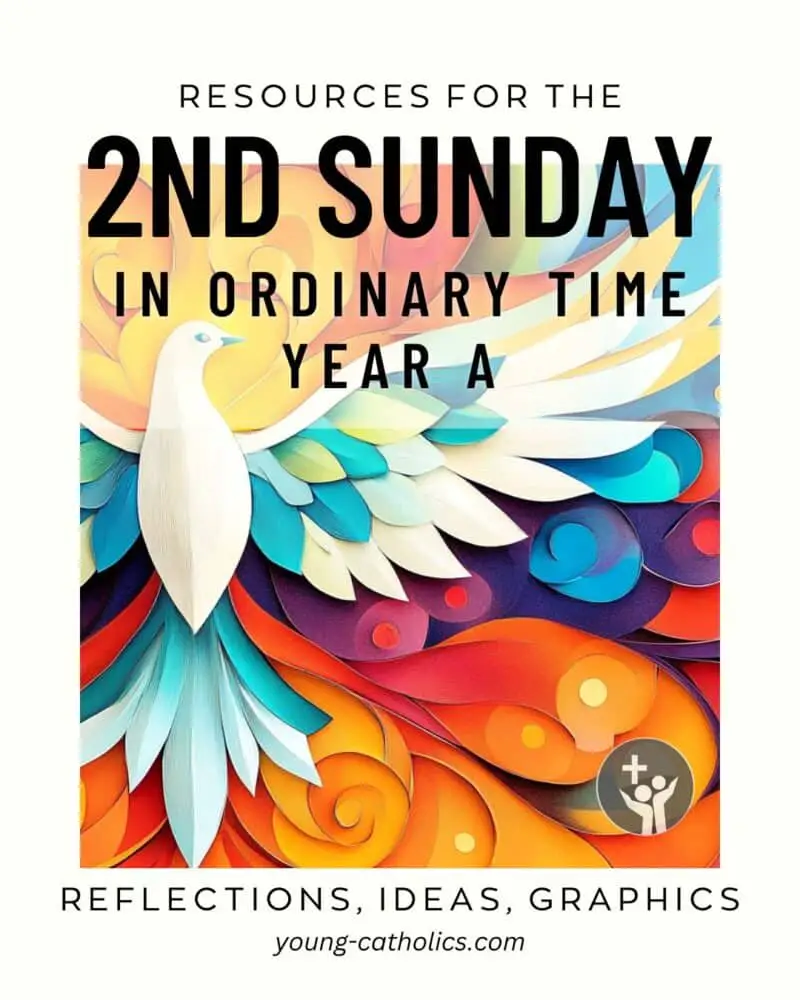
2nd Sunday in Ordinary Time Year A
The Lamb of God Is Revealed
John 1:29-34 shows John the Baptist pointing to Jesus. He calls Jesus the Lamb of God, the one who takes away sin. John explains that he did not know who Jesus truly was at first. But when he baptized Him, he saw the Spirit come down and remain with Him.
John tells the people that God showed him this sign. The one who the Spirit stayed with would baptize with the Holy Spirit. John gives his testimony so others will believe. He clearly says that Jesus is the Son of God.

2nd Sunday in Ordinary Time Year B
Come and See
John 1:35-42 tells how the first disciples began to follow Jesus. John the Baptist points Him out again as the Lamb of God. Two of John’s followers hear this and start walking after Jesus. He turns and asks what they are looking for, then invites them to come and see.
One of these followers is Andrew. After spending time with Jesus, he goes to find his brother Simon. He tells Simon that they have found the Messiah. When Simon meets Jesus, Jesus gives him a new name—Peter. This moment marks the start of their journey as disciples.

2nd Sunday in Ordinary Time Year C
Water Turned to Wine
John 2:1-11 tells the story of Jesus at a wedding in Cana. When the wine runs out, His mother tells Him about the problem. Though Jesus first says it is not His time, He still helps. He tells the servants to fill jars with water.
When they do, the water becomes wine. The head waiter is surprised by how good it tastes. This is the first sign Jesus performs in John’s Gospel. It shows His care for others and begins to reveal who He is. His disciples start to believe in Him.

Dedication of the Lateran Basilica in Rome
Clearing the Temple
John 2:13-22 tells how Jesus goes to the Temple in Jerusalem and finds people selling animals and exchanging money. He makes a whip from cords and drives them out. He tells them not to turn His Father’s house into a marketplace.
The leaders ask Him for a sign to prove His authority. Jesus says if they destroy this temple, He will raise it in three days. They think He means the building, but He is talking about His body. After He rises from the dead, the disciples remember this moment and believe His words.

3rd Sunday of Lent Year B
True Worship Matters
John 2:13-25 shows Jesus visiting the Temple during Passover. He sees people selling animals and exchanging money inside. He drives them out because the Temple should be a place of prayer, not business. His actions surprise many people.
Some ask Jesus for a sign to explain His actions. He speaks about the Temple being destroyed and raised in three days. They think He means the building, but He means His own body. After His Resurrection, the disciples understand. Many people are amazed by His signs, but Jesus knows their hearts. He does not trust their praise if it is not true.
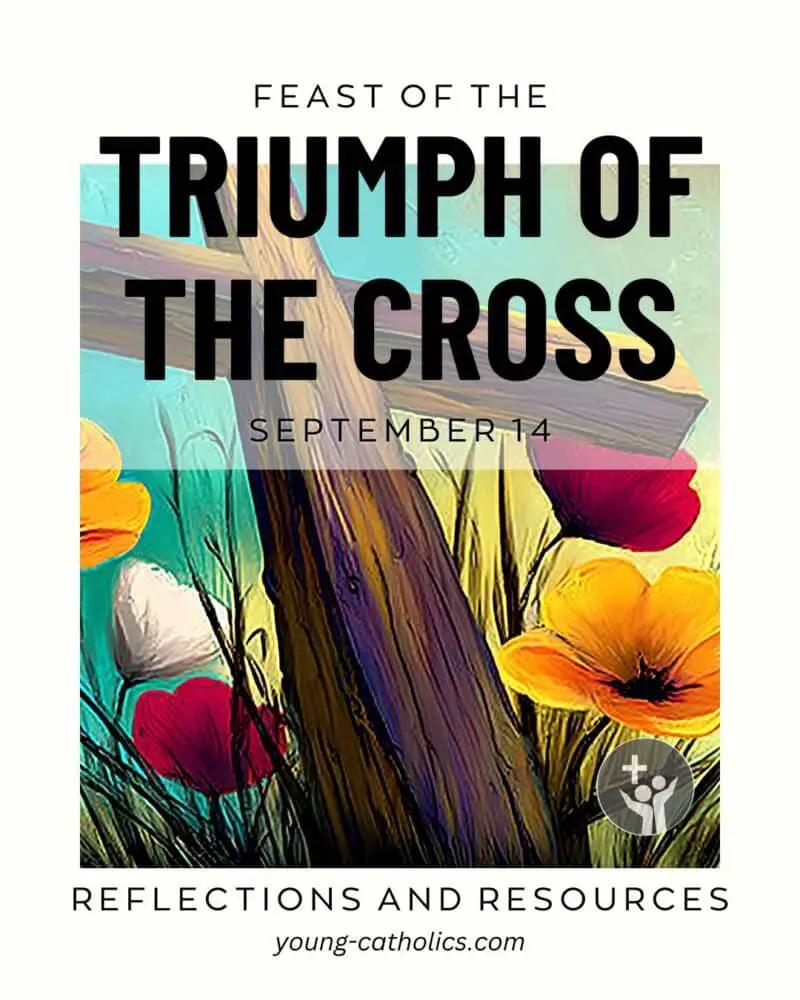
Exaltation of the Holy Cross
Lifted Up for Love
John 3:13-17 explains that Jesus came from heaven to save the world. He compares His mission to the story of Moses lifting the serpent in the desert. Just as the people were healed by looking at the serpent, people will find life by looking to Jesus.
God sends His Son not to judge the world, but to save it. This shows God’s great care for all people. Jesus gives His life so that everyone who believes in Him can have eternal life. This message reminds us that salvation is a gift offered to all.

4th Sunday of Lent Year B
Light and Life for the World
John 3:14-21 shows that Jesus must be lifted up so that people who believe in Him can have eternal life. God sends His Son not to punish the world but to save it. This gift is offered to everyone.
The reading also talks about light and darkness. People who do wrong may hide from the light. But those who live in truth come toward the light. This helps others see that their actions come from God. The passage reminds us to choose truth and walk in the light.
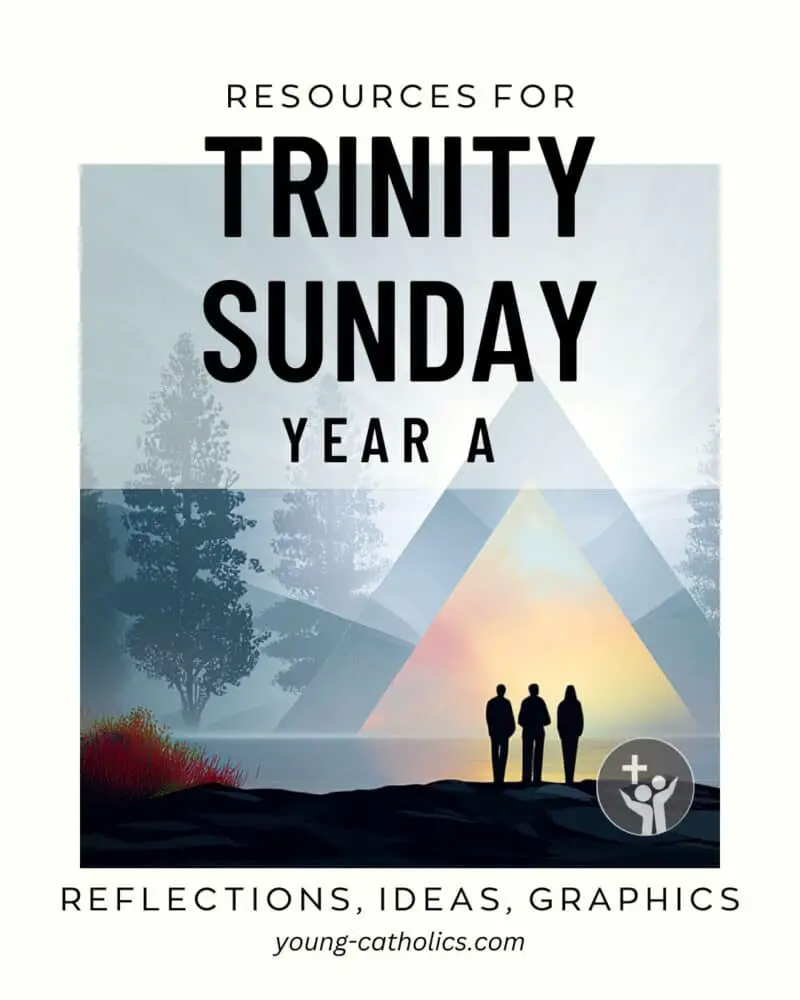
Trinity Sunday Year A
A Gift for Everyone
John 3:16-18 reminds us that God sent His Son out of love for the world. Jesus came to offer eternal life to those who believe in Him. This is a free gift, not something we earn. It is given so that we may be saved, not condemned.
Those who believe in Jesus are not judged. But those who turn away from Him bring judgment on themselves. This short reading reminds us that Jesus came to bring life, not fear. It invites us to trust in Him and accept His gift.
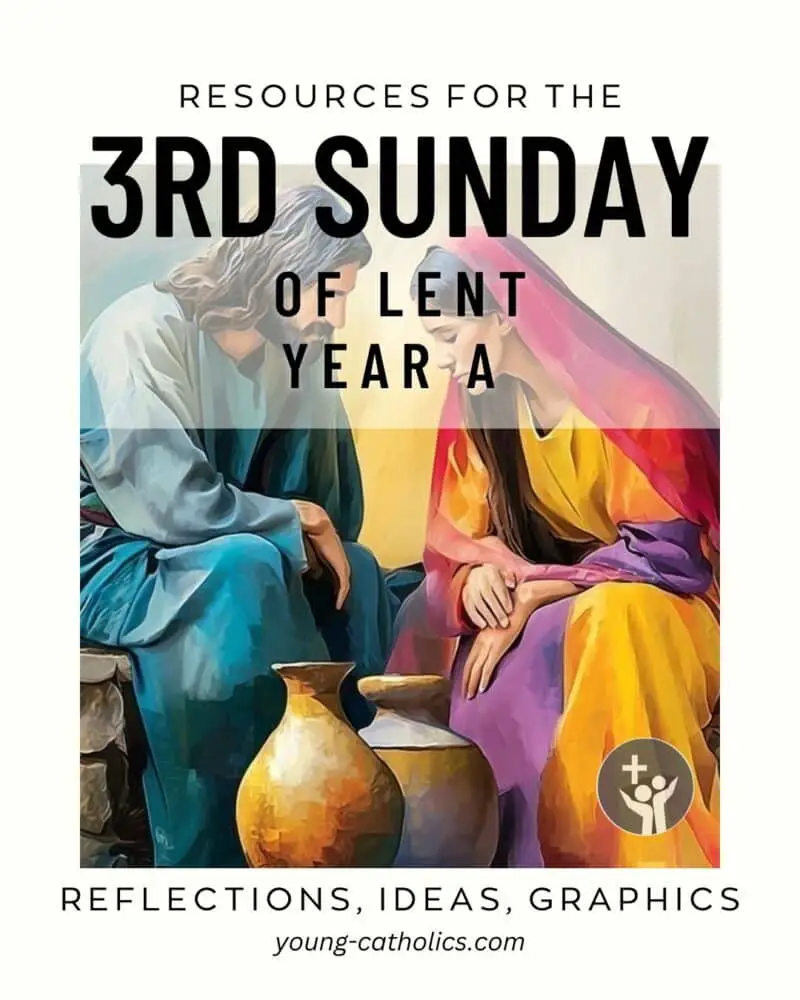
3rd Sunday of Lent Year A and the Scrutinies
The Woman at the Well
John 4:5-42 tells the story of Jesus meeting a Samaritan woman at a well. He asks her for a drink, which surprises her because Jews usually avoided Samaritans. As they talk, Jesus speaks about living water that gives eternal life. The woman is curious and asks questions. Jesus gently reveals that He knows about her life.
She goes back to her town and tells others about Jesus. Many people come to see Him and believe in Him because of her words and their time with Jesus. The disciples are surprised to see Him speaking with her, but Jesus explains that His mission is to bring people to God. This story shows how one simple meeting can lead others to faith.

17th Sunday in Ordinary Time Year B
More Than Enough
John 6:1-15 tells how Jesus feeds a large crowd with just five loaves of bread and two fish. A boy offers his small meal, and Jesus blesses it. The food is shared with thousands, and everyone eats until they are full. There are even leftovers.
The people are amazed by what happened. They begin to think Jesus should be made king. But Jesus leaves quietly. He knows they are focused on the miracle, not on His mission. This story reminds us that Jesus cares for our needs and that even small gifts can bless many when placed in His hands.

18th Sunday in Ordinary Time Year B
The Bread That Gives Life
John 6:24-35 shows people looking for Jesus after He fed the crowd. When they find Him, He tells them not to seek food that spoils. Instead, they should look for food that gives eternal life. He tells them that God has sent Him for this purpose.
The people ask what they must do. Jesus tells them to believe in the one God has sent. They ask for a sign like the manna in the desert. Jesus explains that the true bread from heaven is not from Moses but from God. He then says that He is the bread of life. Those who come to Him will never be hungry or thirsty again.

Commemoration of All the Faithful Departed
The Promise of Eternal Life
In John 6:37-40, Jesus tells the people that he will never turn away anyone who comes to him. He explains that he was sent by the Father to bring life and hope. His mission is to guard all who belong to God and to raise them up on the last day.
This message shows God’s deep desire that no one be lost. Eternal life is promised to all who believe and trust in the Son. Death does not have the final word, because Christ’s power is greater. His words give comfort and strength, reminding us that our future rests in God’s hands.

19th Sunday in Ordinary Time Year B
The Living Bread from Heaven
John 6:41-51 tells how the people complain because Jesus says He came down from heaven. They know His family and do not understand how He can say this. Jesus tells them to stop arguing and explains that only those drawn by the Father will come to Him.
He says that those who believe in Him will have eternal life. Then He repeats that He is the bread of life. Unlike the manna their ancestors ate, which did not last, this bread gives life forever. Jesus says the bread He will give is His flesh, given for the life of the world.

20th Sunday in Ordinary Time Year B
Food for Eternal Life
John 6:51-58 continues Jesus’ teaching about being the bread of life. He tells the people that His flesh is real food and His blood is real drink. This confuses many, but Jesus explains that those who eat His flesh and drink His blood will live forever.
He also says that whoever eats this bread remains in Him, and He remains in them. Just as He lives because of the Father, those who receive Him will live because of Him. This teaching points to the Eucharist, where Jesus gives Himself to us as food for eternal life.

Corpus Christi Year A
Jesus Gives Us His Flesh to Eat
In John 6:51-58, Jesus says He is the living bread from heaven. He tells the people that whoever eats this bread will live forever. The bread He gives is His flesh, for the life of the world.
Jesus explains that His flesh is real food and His blood is real drink. He says that those who receive Him in this way will remain close to Him and share in His life. Just as He lives because of the Father, those who feed on Him will live because of Him. This teaching helps us understand the importance of the Eucharist.

21st Sunday in Ordinary Time Year B
To Whom Shall We Go?
John 6:60-69 shows that many of Jesus’ followers struggled with His teaching about eating His flesh and drinking His blood. They said it was hard to accept. Some of them stopped following Him and walked away.
Jesus then asked the Twelve if they also wanted to leave. Peter answered for the group. He said that Jesus has the words of eternal life and that they have come to believe He is the Holy One of God. This moment shows both the challenge and the trust of being a true disciple.
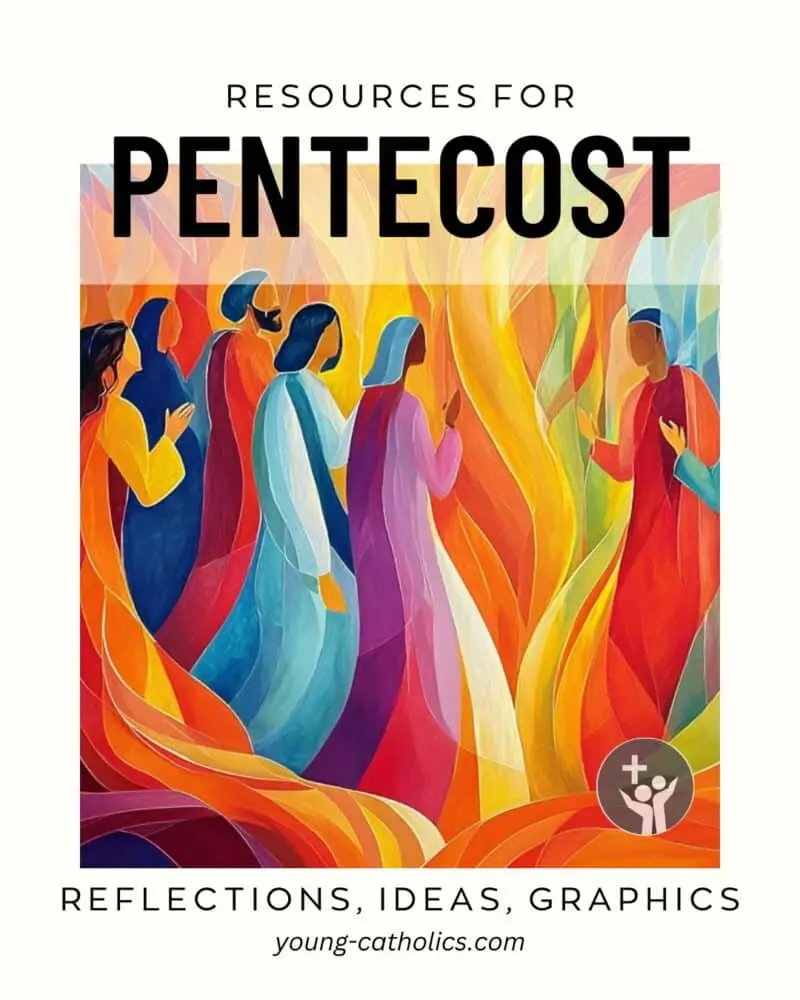
Pentecost Sunday: Vigil Mass
Living Water for Thirsty Hearts
John 7:37-39 takes place during a Jewish feast in Jerusalem. Jesus stands up and invites anyone who is thirsty to come to Him and drink. He promises that those who believe in Him will have streams of living water flow from within them.
The Gospel explains that this living water means the Holy Spirit. At that time, the Spirit had not yet been given because Jesus had not yet been glorified. This reading reminds us that faith in Jesus brings new life and that the Holy Spirit will come to those who believe.

5th Sunday of Lent Year C
Go and Sin No More
John 8:1-11 tells the story of a woman caught in adultery. The religious leaders bring her to Jesus and ask if she should be stoned, as the law says. They are trying to trap Him. Jesus bends down and writes on the ground, then tells them that whoever has no sin should throw the first stone.
One by one, the crowd leaves. No one stays to accuse her. Jesus then speaks to the woman. He does not condemn her but tells her to go and not sin again. This moment shows mercy, while also calling for a change of life.

4th Sunday of Lent Year A and the Scrutinies
I Was Blind and Now I See
John 9:1-41 tells how Jesus heals a man who was blind from birth. He makes mud, puts it on the man’s eyes, and tells him to wash in a pool. The man does, and he can see. This amazes the people, and some do not believe it is really him.
The religious leaders question the man and his parents. They are upset because the healing happened on the Sabbath. The man simply tells them what Jesus did. He says only someone from God could do such a thing. In the end, Jesus finds him again, and the man believes in Him. The story ends with Jesus reminding everyone that some people who can see are still blind to the truth.
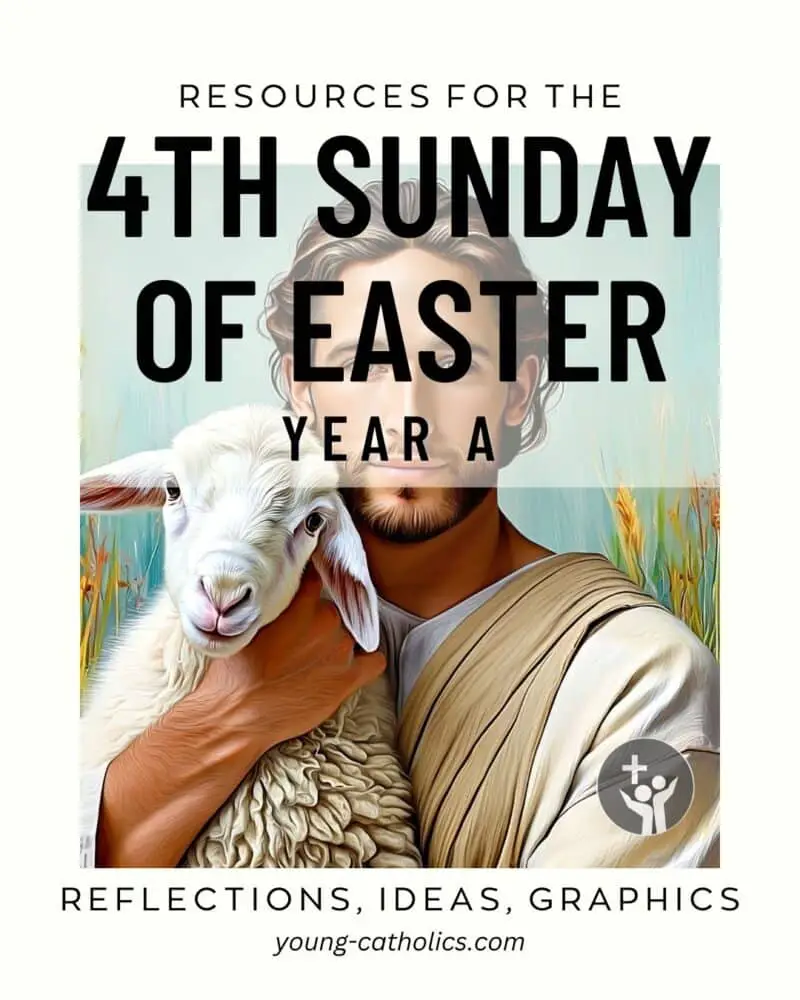
4th Sunday of Easter Year A
The Good Shepherd
In John 10:1-10, Jesus talks about being the good shepherd. He compares himself to a shepherd who leads and protects his sheep. He says that the sheep know his voice and follow him, because they trust him. He warns against strangers who try to trick the sheep and lead them away.
Jesus explains that he came to give life to his followers, not just to keep them safe but to help them live fully. The thief, on the other hand, comes only to harm them. Jesus is clear that by following him, people will find the care, safety, and purpose they need in their lives.

4th Sunday of Easter Year B
The Shepherd Who Lays Down His Life
In John 10:11-18, Jesus says he is the good shepherd who cares deeply for his sheep. He is not like someone hired to watch them. A hired person runs away when danger comes. But Jesus stays and protects his sheep, even if it costs him his life.
He also says he knows his sheep, and they know him. This shows a close and loving relationship. Jesus adds that he has other sheep too, and he wants to bring them together as one flock. He is willing to lay down his life, and he will take it up again. This is part of his mission from the Father.

4th Sunday of Easter Year C
Safe in the Shepherd’s Hands
In John 10:27-30, Jesus says that his followers are like sheep who listen to his voice. He knows them, and they stay close to him. He promises them eternal life and says they will never be lost or taken away.
Jesus also says that no one can take his followers out of his hand or the Father’s hand. This shows that they are safe and protected. He ends by saying that he and the Father are one, showing their close unity and shared care for the people.
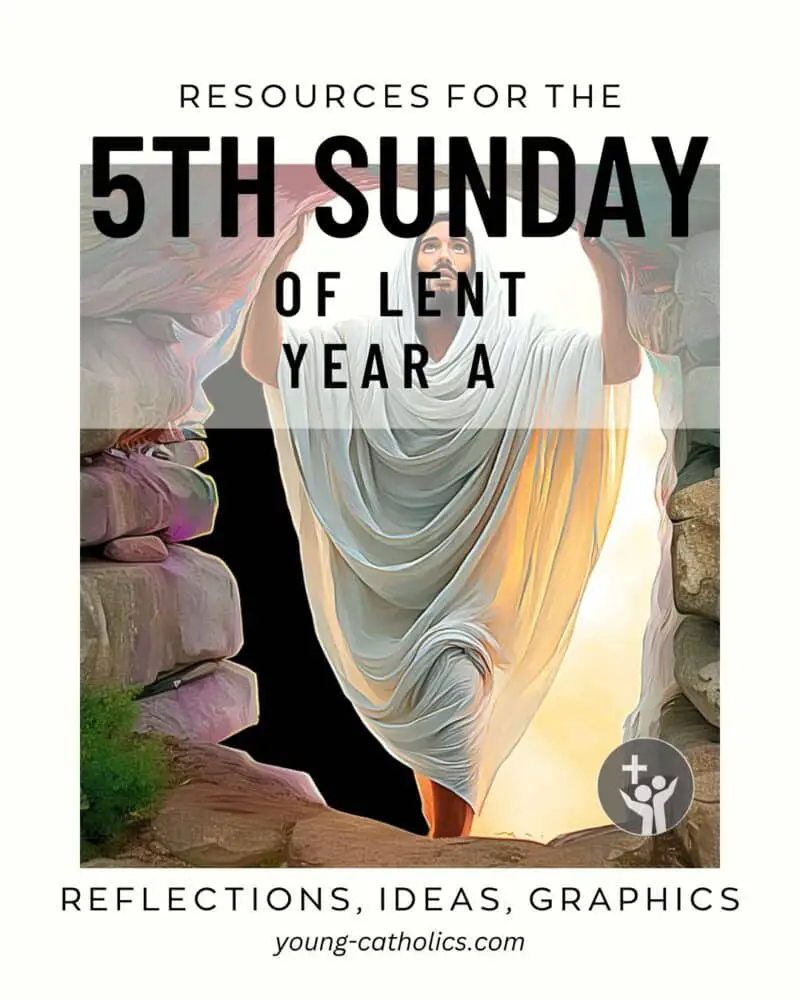
5th Sunday of Lent Year A and the Scrutinies
Jesus Brings Lazarus Back to Life
In John 11:1-45, Jesus learns that his friend Lazarus is very sick. But he waits before going to help. When he finally arrives, Lazarus has already died. His sisters, Martha and Mary, are very sad. They both say that if Jesus had come sooner, Lazarus would still be alive.
Jesus goes to the tomb and tells them to roll the stone away. He prays to the Father and then calls Lazarus to come out. Lazarus walks out of the tomb, alive again. Many people see this and begin to believe in Jesus. This moment shows his great power and care for his friends.

Palm Sunday: Procession of Palms Year B
Jesus Enters Jerusalem
In John 12:12-16, a large crowd hears that Jesus is coming to Jerusalem. They welcome him with palm branches and joyful shouts. They see him as a king and hope he will save them. Jesus rides in on a young donkey, just as the prophets had said long ago.
At first, the disciples don’t understand what is happening. But later, they remember these things and see how they were part of something important. The people are excited because they had seen or heard about the raising of Lazarus. This moment marks the beginning of Jesus’ final days before his death.

5th Sunday of Lent Year B
A Seed Must Die to Grow
In John 12:20-33, some Greeks want to meet Jesus. When he hears this, Jesus says his time has come. He talks about a seed that must die to grow. In the same way, he must give up his life to bring new life to others.
Jesus says those who follow him must be ready to give up their own wants. He knows that his death will be hard, but he trusts the Father. He says that when he is lifted up, he will draw people to himself. This shows that his death on the cross will bring hope to the world.

Holy Thursday: Mass of the Lord’s Supper
Jesus Washes His Disciples’ Feet
In John 13:1-15, Jesus knows his time is almost up. During the meal, he gets up, wraps a towel around his waist, and begins to wash his disciples’ feet. This surprises them, especially Peter, who doesn’t think it’s right for Jesus to do such a low task.
Jesus explains that they will understand later. He tells them that if he, their teacher, is willing to serve in this way, they should do the same for others. His actions show that real leadership means helping and serving, not seeking power.

5th Sunday of Easter Year C
Love One Another
In John 13:31-33A, 34-35, Jesus speaks to his disciples after Judas leaves. He says the time has come for him to be lifted up. He tells them he will be with them only a little longer. They are not yet able to follow him where he is going.
Jesus gives them a clear command. He tells them to love one another, just as he has loved them. This kind of love will show others that they are his followers. Loving each other is how they are called to live and to lead.
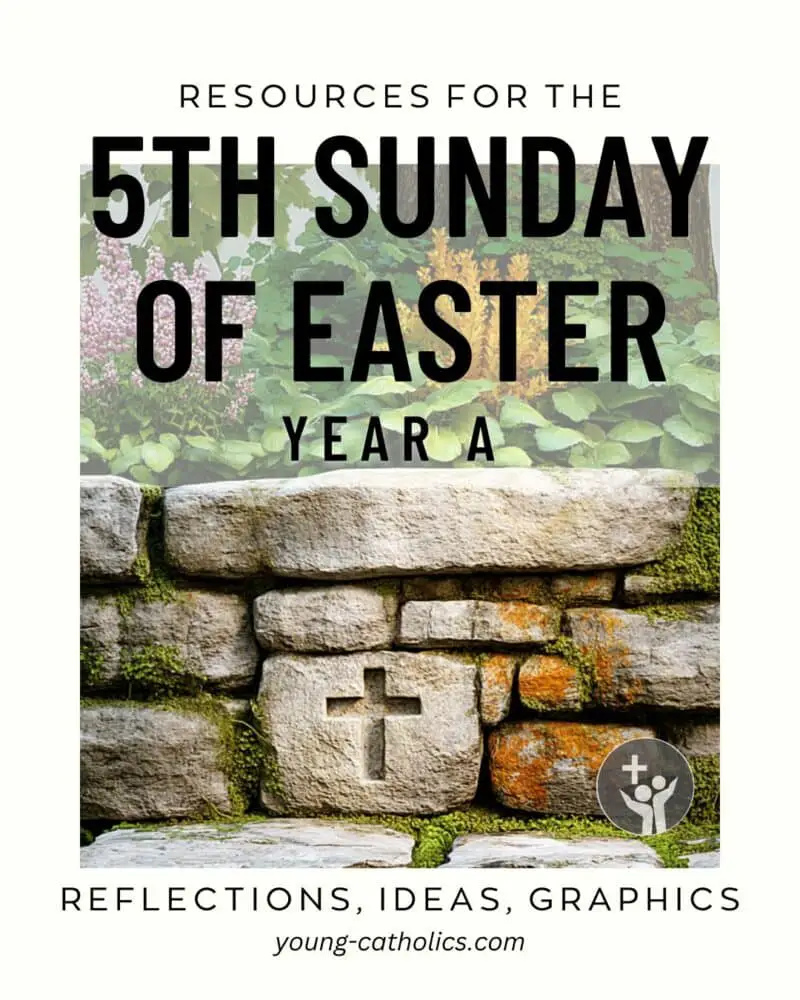
5th Sunday of Easter Year A
The Way to the Father
In John 14:1-12, Jesus tells his disciples not to be afraid. He says he is going to prepare a place for them. He promises that they will be with him again. Thomas is confused and asks how they will know the way.
Jesus answers that he is the way, the truth, and the life. He says that knowing him means knowing the Father. Philip asks to see the Father, and Jesus explains that anyone who has seen him has seen the Father. He also tells them that those who believe in him will do the same works he does, and even greater ones.

Pentecost Sunday Year C
The Promise of the Holy Spirit
In John 14:15-16, 23B-26, Jesus tells his disciples that if they love him, they will keep his commandments. He promises that the Father will send a helper to be with them forever. This helper is the Holy Spirit, who will stay with them and guide them.
Jesus says that those who love him will be loved by the Father. He promises to remain with them. The Holy Spirit will teach them everything they need to know. He will also help them remember all that Jesus has said. This brings peace and hope as they prepare for what is coming.
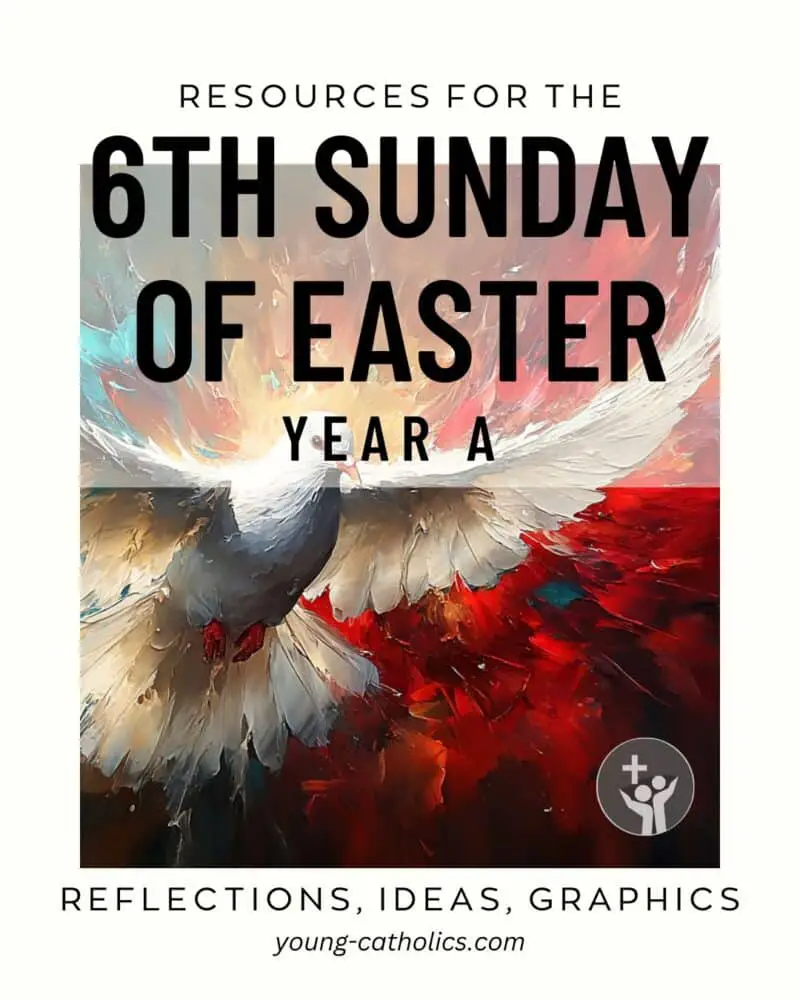
6th Sunday of Easter Year A
Never Left Alone
In John 14:15-21, Jesus tells his followers to show their love by keeping his commandments. He promises to ask the Father to send a helper who will stay with them always. This helper is the Spirit of truth, who will live with them and in them.
Jesus says the world will not see him, but his followers will. He tells them that because he lives, they will live too. He promises that they will not be left alone. They will know that he is with the Father, and that they are united with him. Those who love him and follow his words will be loved by the Father, and Jesus will stay close to them.

6th Sunday of Easter Year C
Peace That Stays
In John 14:23-29, Jesus says that those who love him will keep his words. He promises that the Father will love them, and they will make their home with them. But those who do not listen are not truly connected to him or the Father.
Jesus promises the Holy Spirit will come to teach and remind the disciples of everything he has told them. He gives them peace—not the kind the world gives, but a lasting peace. He tells them not to be afraid. He says he is going away, but they should be glad, because he is returning to the Father.

5th Sunday of Easter Year B
Stay Connected to the Vine
In John 15:1-8, Jesus compares himself to a vine and his followers to branches. He says that branches must stay connected to the vine to stay alive and grow. If they stay close to him, they will bear good fruit. If not, they will wither and be thrown away.
He tells them to remain in him, just like a branch stays on the vine. Those who stay with him will be strong and fruitful. God is like the gardener who helps them grow. Jesus says that when they bear fruit, they show they are his true followers.

6th Sunday of Easter Year B
Chosen to Love
In John 15:9-17, Jesus tells his followers to remain in his love by keeping his commandments. He wants them to have joy that lasts. The most important command he gives is to love one another the way he has loved them.
He says there is no greater love than giving your life for your friends. Jesus calls them friends, not servants, because he has shared everything with them. He reminds them that they did not choose him—he chose them. He sends them out to love and to bear lasting fruit.

Pentecost Sunday Year B
The Spirit Will Guide You
In John 15:26-27; 16:12-15, Jesus tells his followers that the Spirit will come from the Father. The Spirit will speak the truth about Jesus and help the disciples share that truth with others. They are called to be witnesses because they have been with Jesus from the beginning.
Jesus says there is more he wants to tell them, but they are not ready yet. When the Spirit comes, he will guide them and help them understand. The Spirit will not speak on his own but will share what comes from Jesus and the Father. This will help the disciples know what to do and say.

Trinity Sunday Year C
The Spirit Will Teach the Truth
In John 16:12-15, Jesus tells his disciples that he still has more to say, but they are not ready to hear it yet. He promises that the Holy Spirit will come and guide them. The Spirit will help them understand what is true.
The Spirit will not speak on his own but will pass on what he hears from Jesus. He will show them what is to come. The Spirit will give glory to Jesus by sharing his message. Everything the Father has also belongs to Jesus, and the Spirit will make it known to the disciples.
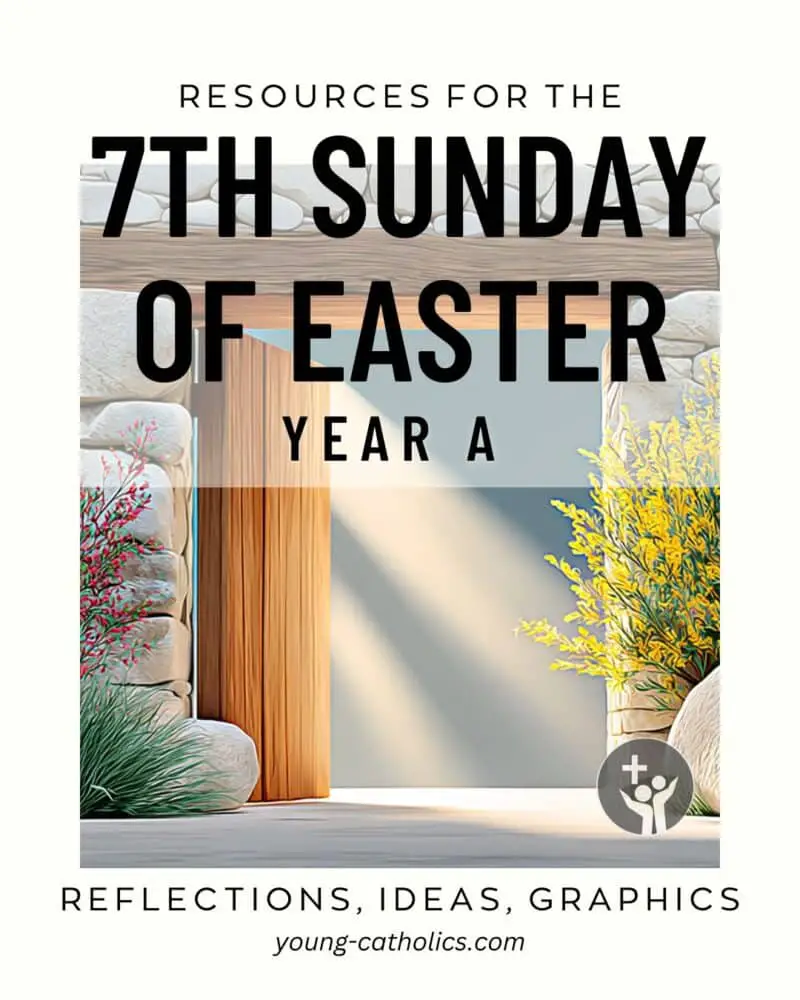
7th Sunday of Easter Year A
Jesus Prays for His Followers
In John 17:1-11, Jesus looks up and talks to the Father. He says the time has come to finish his work. He speaks about the life he offers to those who know the Father and believe in him. He has made the Father’s name known and has done what he was sent to do.
Jesus then prays for his disciples. He says they belong to the Father and have followed his word. He asks the Father to protect them now that he is going back to heaven. Jesus wants them to stay united, just as he and the Father are one.

7th Sunday of Easter Year B
Protected and Sent
In John 17:11B-19, Jesus prays for his followers as he prepares to leave the world. He asks the Father to keep them safe and united. He wants them to stay strong in faith, even though they will face challenges.
Jesus says his followers are not part of the world, just as he is not. But he doesn’t ask for them to be taken out of the world. Instead, he asks that they be kept safe from evil. He sends them out with a mission and asks the Father to make them ready by the truth.

7th Sunday of Easter Year C
That They May Be One
In John 17:20-26, Jesus prays not only for his disciples but also for everyone who will believe in him through their message. He asks the Father to help all believers stay united, just as he and the Father are one.
Jesus wants this unity to show the world that the Father sent him. He also prays that his followers will one day be with him and see his glory. He asks that God’s love remain in them, and that he himself will be with them always.

Good Friday of the Lord’s Passion
The Passion of Jesus
In John 18:1–19:42, Jesus is arrested in a garden after Judas leads soldiers to him. Peter tries to fight back but is told to stop. Jesus is taken to the high priest and questioned. Peter follows but denies knowing Jesus three times. Jesus is then taken to Pilate, who questions him and tries to release him, but the crowd demands his death.
Pilate gives in and orders Jesus to be crucified. Jesus carries his cross and is nailed to it at a place called Golgotha. He speaks a few final words before dying. Soldiers pierce his side to make sure he is dead. Later, Joseph of Arimathea and Nicodemus take his body and place it in a nearby tomb.

Christ the King Year B
Jesus and the Question of Kingship
In John 18:33B-37, Pilate asks Jesus if he is a king. Jesus answers by explaining that his kingdom is not from this world. He says that if it were, his followers would have fought to stop his arrest.
Jesus says he came into the world to tell the truth. Everyone who listens to the truth hears his voice. Pilate is left unsure, but Jesus stays calm and clear about who he is and why he came.

Solemnity of the Sacred Heart Year B
The Pierced Side of Jesus
In John 19:31-37, the soldiers check to see if those on the crosses have died. Since Jesus is already dead, they do not break his legs. Instead, one soldier pierces his side with a spear.
Blood and water flow out at once. This moment is remembered as a sign of who Jesus is. It connects to the devotion to the Sacred Heart, showing his love poured out for others. The passage ends by saying these things happened to fulfill the Scriptures.
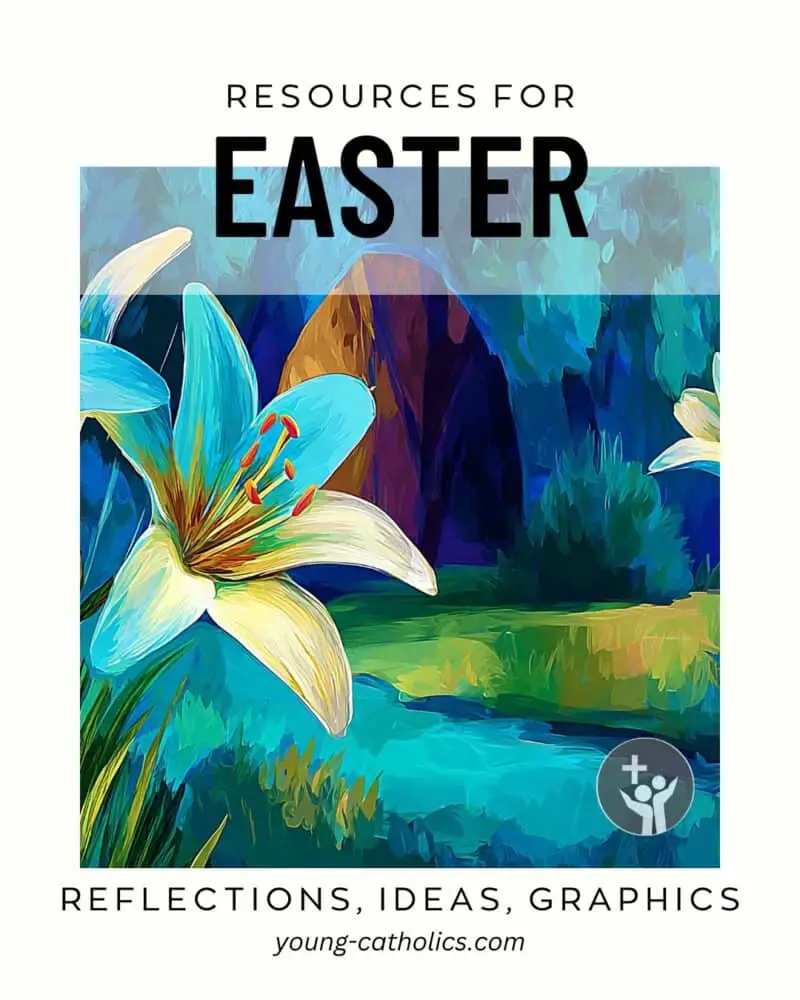
Easter Sunday
The Empty Tomb
In John 20:1-9, Mary Magdalene goes to the tomb early in the morning and sees the stone rolled away. She runs to tell Peter and another disciple that the body of Jesus is missing.
Peter and the other disciple run to the tomb. The other disciple gets there first but waits. Peter goes in and sees the burial cloths. Then the other disciple enters, sees everything, and believes. They still do not fully understand that Jesus has risen from the dead.

Pentecost Sunday
Peace and the Holy Spirit
In John 20:19-23, the disciples are hiding behind locked doors because they are afraid. Jesus appears and stands among them. He tells them not to be afraid and brings them peace.
He shows them his hands and side so they know it is really him. Then he breathes on them and tells them to receive the Holy Spirit. He gives them the power to forgive sins. This moment marks the start of their mission to continue his work.
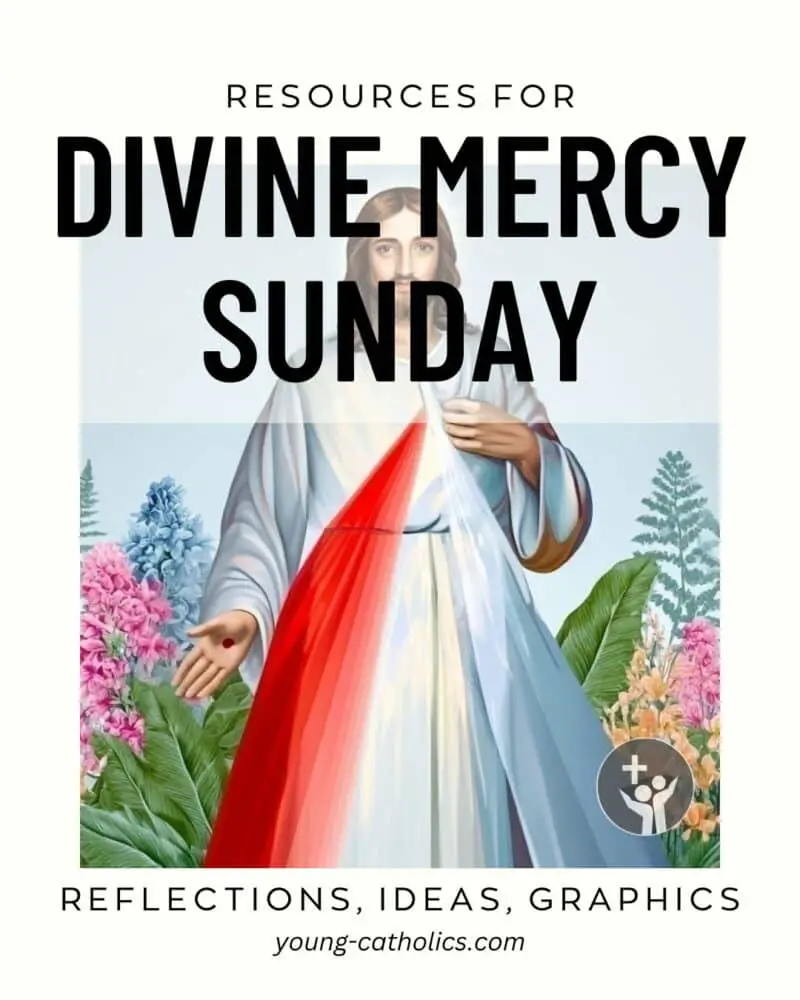
2nd Sunday of Easter (Divine Mercy Sunday)
Mercy and Belief
In John 20:19-31, Jesus appears to his disciples on the evening of the first day of the week. They are afraid and hiding. He brings them peace and shows them his wounds. Then he gives them the Holy Spirit and sends them out. He tells them they now have the power to forgive sins.
Thomas is not there and does not believe when the others tell him. A week later, Jesus appears again and invites Thomas to touch his wounds. Thomas believes and calls him Lord. Jesus says those who believe without seeing are blessed. This reading for Divine Mercy Sunday reminds us of Jesus’ peace, forgiveness, and love for all who turn to him.

3rd Sunday of Easter Year C
Breakfast by the Sea
In John 21:1-19, Jesus appears to some of the disciples while they are fishing. They have caught nothing all night. Jesus tells them to try again, and they catch many fish. Then they realize it is him. When they come to shore, he has breakfast ready for them.
After they eat, Jesus speaks with Peter. He asks Peter three times if he loves him. Each time Peter says yes, and Jesus tells him to care for his followers. This reminds Peter of his earlier denial and shows that Jesus still trusts him. Jesus then invites Peter to follow him once more.
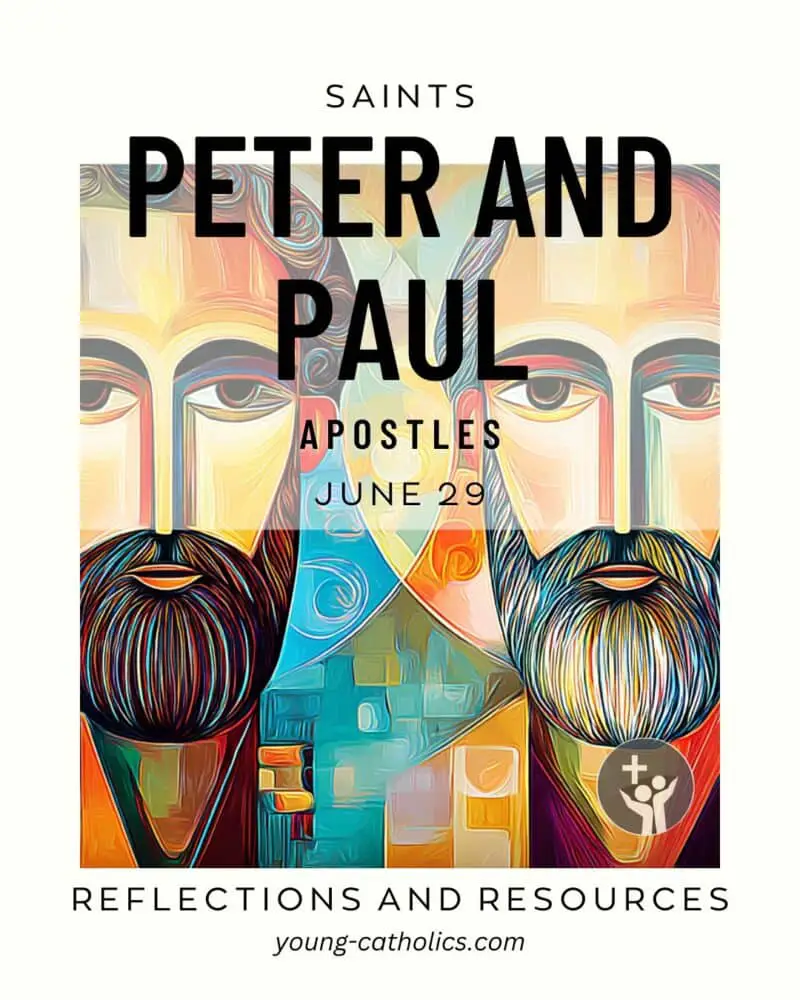
Sts. Peter and Paul, Vigil Mass
Peter’s New Mission
In John 21:15-19, Jesus talks with Peter after they finish eating. He asks Peter three times if he loves him. Each time Peter says yes, and Jesus tells him to care for his followers, like a shepherd with sheep.
This moment gives Peter a chance to make up for the three times he denied Jesus. Jesus shows that he still trusts Peter and gives him an important job. He also tells Peter that one day he will suffer for following him. Then Jesus simply says, “Follow me.”
At Weekday Masses
- The 7th Day in the Octave of Christmas – John 1:1-18: The Word Becomes Flesh
- Christmas Weekday on January 2 – John 1:19-28: John the Baptist’s Testimony
- Christmas Weekday on January 3 – John 1:29-34: John Identifies the Messiah
- Christmas Weekday on January 4 – John 1:35-42: First Disciples of Jesus
- Christmas Weekday on January 5 – John 1:43-51: Nathanael’s Call and Revelation
- St. Bartholomew, Apostle – John 1:45-51: Jesus Calls Nathanael
- Sts. Michael, Gabriel, and Raphael, Archangels – John 1:47-51: Angels of God Ascending and Descending
- Christmas Weekday on January 7 – John 2:1-11: The First Miracle at Cana
- Monday of the 2nd Week of Easter – John 3:1-8: The Call to Be Born of the Spirit
- Tuesday of the 2nd Week of Easter – John 3:7b-15: The Need for Rebirth
- Wednesday of the 2nd Week of Easter – John 3:16-21: God’s Love and Judgment
- Saturday after Epiphany – John 3:22-30: John’s Joy and Humility
- Thursday of the 2nd Week of Easter – John 3:31-36: Heavenly Wisdom Surpasses All
- Weekday in the 3rd Week of Lent – John 4:5-42: Living Water in Sychar
- Monday of the 4th week of Lent – John 4:43-54: Belief Through Signs
- Tuesday of the 4th week of Lent – John 5:1-16: Healing at Bethesda
- Wednesday of the 4th week of Lent – John 5:17-30: Divine Authority and Judgment
- Thursday of the 4th week of Lent – John 5:31-47: Jesus Confronts Unbelief
- Friday of the 3rd Week of Advent – John 5:33-36: The Works that Testify to Jesus
- Friday of the 2nd Week of Easter – John 6:1-15: The Feeding of the Five Thousand
- Saturday of the 2nd Week of Easter – John 6:16-21: Jesus Walks on Water
- Monday of the 3rd Week of Easter – John 6:22-29: Seeking the Eternal
- Tuesday of the 3rd Week of Easter – John 6:30-35: The Bread of Life
- Wednesday of the 3rd Week of Easter – John 6:35-40: Assurance of Eternal Life
- Thursday of the 3rd Week of Easter – John 6:44-51: The Living Bread
- Friday of the 3rd Week of Easter – John 6:52-59: Jesus’ Proclamation of Eucharistic Truth
- Saturday of the 3rd Week of Easter – John 6:60-69: The Challenge of Faith
- Friday of the 4th Week of Easter – John 14:1-6: Jesus the Way to the Father
- Saturday of the 4th Week of Easter – John 14:7-14: Unity with the Father
- Monday of the 5th Week of Lent – John 8:1-11: Mercy Over Condemnation
- Monday of the 5th Week of Lent (Year C) – John 8:12-20: The Light Sent by the Father
- Tuesday of the 5th Week of Lent – John 8:21-30: Jesus Speaks of His Departure
- Wednesday of the 5th Week of Lent – John 8:31-42: True Freedom in Christ
- Thursday of the 5th Week of Lent – John 8:51-59: Eternal Life Through Christ
- Weekday in the 4th Week of Lent – John 9:1-41: Once I Was Blind
- Monday of the 4th Week of Easter – John 10:1-10: The True Gate and Shepherd
- Monday of the 4th Week of Easter (Year A) – John 10:11-18: The Good Shepherd
- Tuesday of the 4th Week of Easter – John 10:22-30: Assurance of Eternal Safety
- Friday of the 5th Week of Lent – John 10:31-42: Jesus Challenges Accusations
- Weekday in the 5th Week of Lent – John 11:1-45: Lazarus Raised from the Tomb
- Sts. Martha, Mary, and Lazarus – John 11:19-27: Jesus Comforts Martha
- Saturday of the 5th Week of Lent – John 11:45-56: A Plot Against Jesus
- Monday of Holy Week – John 12:1-11: Anointing at Bethany
- St. Lawrence, Deacon and Martyr – John 12:24-26: The Grain of Wheat
- Wednesday of the 4th Week of Easter – John 12:44-50: Light and Judgment
- Thursday of the 4th Week of Easter – John 13:16-20: A Lesson in Service
- Tuesday of Holy Week – John 13:21-33, 36-38: Betrayal Announced at Supper
- Friday of the 4th Week of Easter – John 14:1-6: Jesus the Way to the Father
- Sts. Philip and James, Apostles – John 14:6-14: Knowing Through Jesus
- Saturday of the 4th Week of Easter – John 14:7-14: Unity with the Father
- Monday of the 5th Week of Easter – John 14:21-26: Love and Obedience
- Tuesday of the 5th Week of Easter – John 14:27-31a: Peace and Obedience
- Wednesday of the 5th Week of Easter – John 15:1-8: The True Vine
- Thursday of the 5th Week of Easter – John 15:9-11: Stay in Love
- St. Matthias, Apostle – John 15:9-17: The Command of Love
- Friday of the 5th Week of Easter – John 15:12-17: Jesus’ Command to Love
- Saturday of the 5th Week of Easter – John 15:18-21: World’s Reaction Explained
- Monday of the 6th Week of Easter – John 15:26-16:4a: Forewarned by Jesus
- Tuesday of the 6th Week of Easter – John 16:5-11: The Necessity of Departure
- Wednesday of the 6th Week of Easter – John 16:12-15: The Promise of the Spirit of Truth
- Thursday of the 6th Week of Easter – John 16:16-20: Jesus Foretells His Return
- Friday of the 6th Week of Easter – John 16:20-23: Promise of Enduring Joy
- Saturday of the 6th Week of Easter – John 16:23b-28: Promises of Direct Prayer
- Monday of the 7th Week of Easter – John 16:29-33: Assurance of Peace
- Tuesday of the 7th Week of Easter – John 17:1-11a: Jesus Prays for Glory and His Disciples
- Wednesday of the 7th Week of Easter – John 17:11b-19: Prayer for Sanctification
- Thursday of the 7th Week of Easter – John 17:20-26: Unity and Love in Jesus’ Prayer
- Our Lady of Sorrows – John 19:25-27: At the Foot of the Cross
- Blessed Virgin Mary, Mother of the Church – John 19:25-34: The Final Moments at the Cross
- St. John, Apostle and Evangelist – John 20:1a and 2-8: The Empty Tomb and Belief in the Resurrection
- St. Mary Magdalene – John 20:1-2, 11-18: The Resurrection Encounter
- Tuesday in the Octave of Easter – John 20:11-18: Mary’s Encounter with the Risen Lord
- St. Thomas, Apostle – John 20:24-29: Thomas Sees and Believes
- Friday in the Octave of Easter – John 21:1-14: Miraculous Catch and Breakfast
- Friday of the 7th Week of Easter – John 21:15-19: Peter’s Renewed Commitment
- Saturday of the 7th Week of Easter – John 21:20-25: The Testimony of the Beloved Disciple
Resources
Jesus Is the Lamb: A Look at John’s Gospel
In this episode of the Bible in a Year Podcast, Fr. Mike Schmitz introduces John chapters 1, 2, and 3. He explains that the gospel of John shows that Jesus is not just a teacher or prophet. He is God himself, the Word made flesh. Fr. Mike points out how the gospel begins by clearly showing Jesus’s true identity.
Fr. Mike focuses on John the Baptist calling Jesus the Lamb of God. He explains this means Jesus is the sacrifice. Just like the lamb in Exodus gave life and freedom, Jesus will give eternal life through his own offering. This image ties back to the Old Testament and prepares us for what Jesus will do.
He also highlights John 3:16. God loves the whole world and sent Jesus for everyone. Not just for the Jewish people, but for all people.
Fr. Mike reminds us that in the Church today, all people are welcomed. Every nation, race, and language is part of God’s plan through Jesus.
Jesus Gives Us Himself: John’s Gospel and the Eucharist
In this episode of the Bible in a Year Podcast, Fr. Mike Schmitz shares how John chapters 4, 5, and 6 have changed his life. He talks about Jesus offering living water to the Samaritan woman and healing people in powerful ways. Jesus shows that he is doing the will of the Father and has real authority.
Fr. Mike highlights John chapter 6 as one of the most important parts. Jesus feeds the crowd, but then tells them something even bigger: he is the bread from heaven. He says his flesh is real food and his blood is real drink. This is not just a symbol.
Fr. Mike explains that many people walked away from Jesus after hearing this teaching. It was hard to accept. But Jesus didn’t change his words. He asked his disciples if they would leave too.
Peter’s reply shows trust, even without full understanding. Fr. Mike says this is how we should respond. The Eucharist really is Jesus, and that is how he wants to be with us today.
Seeing the Truth
In this episode of the Bible in a Year Podcast, Fr. Mike Schmitz reflects on John chapters 7, 8, and 9. He explains how some people believed in Jesus, but others refused to see the truth. This shows how spiritual blindness is real. It happens when we choose not to see what God is showing us.
Fr. Mike points out that Jesus calls himself “I am” in John chapter 8. This is the name God gave to Moses. Jesus is not just a teacher or a prophet. He is claiming to be equal with God. This was a bold statement, and it upset many people.
In John chapter 9, Jesus heals a man born blind. Fr. Mike says this is a sign. It shows who Jesus really is. The miracle helps people see with both their eyes and their hearts.
Fr. Mike invites us to stay open to the truth. He reminds us that these signs are meant to help us believe. God speaks through them, and we are called to respond.
He Calls Us Back to Life
In this episode of the Bible in a Year Podcast, Fr. Mike Schmitz reflects on John chapters 10, 11, and 12. He highlights Jesus as the Good Shepherd who knows his sheep and lays down his life for them. Jesus brings unity and offers abundant life to all people, not just one group.
Fr. Mike points out that Jesus weeps at the tomb of Lazarus. Even though he knows he will raise Lazarus, Jesus lets himself feel the pain of others. This shows how Jesus enters into our sorrow and cares deeply for us.
He also explains that Lazarus had been dead four days to show there was no doubt—he was fully dead. Jesus speaks and brings him back to life. Fr. Mike says this shows Jesus has power even in the darkest places.
Lastly, Fr. Mike says we must decide how we respond to Jesus. He cannot be just a good man. He is either truly God or not. If Jesus is who he says he is, then we belong to him.
Jesus Washes, Loves, and Stays With Us
In this episode, Fr. Mike Schmitz talks about John chapters 13, 14, and 15. He explains how Jesus washes his disciples’ feet and shows what it means to serve. Jesus tells them to follow his example. He doesn’t just talk about love—he shows it.
Fr. Mike speaks about Judas and Peter. Judas hides his plans from everyone. Peter promises to stay with Jesus but later denies him. Fr. Mike says we all have times when we act like Judas or Peter. Jesus knows this and still invites us to follow him.
Jesus gives his disciples a new command: to love one another. He also promises the Holy Spirit. Fr. Mike says Jesus is the first consoler, and the Holy Spirit is the second. God wants to stay close to us, always.
Fr. Mike talks about Jesus as the true vine. He says we need to stay with Jesus to grow. Without him, we can do nothing. But with him, we can face anything.
Jesus Prays, Suffers, and Stays With Us
In this episode, Fr. Mike Schmitz talks about John chapters 16, 17, and 18. Jesus tells his friends they will suffer, but they should take heart because he has overcome the world. Fr. Mike says this shows us that following Jesus won’t be easy, but Jesus gives us peace and stays with us.
Fr. Mike explains that in John 17, Jesus prays for his disciples and also for us. He prays for all who will believe through the words of the apostles. Even in his suffering, Jesus is thinking about us. That prayer is a gift for us today.
In John 18, Jesus is betrayed, denied, and put on trial. Fr. Mike says Jesus is still strong and faithful, even when his friends fail him. He does not fight back, but accepts what is happening.
Fr. Mike ends by saying we often choose things that don’t love us back, like when the people chose Barabbas. He prays that we will choose Jesus, the true Son of the Father, every day.
Jesus Is the Lamb and the Priest
In this episode of the Bible in a Year Podcast, Fr. Mike Schmitz talks about John chapters 19, 20, and 21. He explains that Jesus is the Lamb of God, offered as a sacrifice. Pilate finds no fault in him, just like the lambs in the temple had to be perfect. Jesus gives up his life freely. He is not just the sacrifice—he is also the priest and the altar.
Fr. Mike says Jesus wears a seamless tunic, like a priest’s garment. He connects the Last Supper to the cross. The words “It is finished” show the Passover is now complete. Jesus is the true Lamb who brings freedom.
He also talks about Jesus giving Mary to the beloved disciple. Fr. Mike says this means Mary is given to all of us as our mother. Jesus gives us this gift from the cross.
Finally, Fr. Mike explains how Jesus forgives Peter and gives him a new mission. Even after failure, Jesus restores him and tells him to lead.

About St. John the Evangelist
St. John the Evangelist is traditionally believed to be the author of the Gospel of John, one of the four canonical Gospels in the New Testament. He is also known as the beloved disciple and was one of the twelve apostles of Jesus.
As an apostle who was particularly close to Jesus, St. John’s personal experiences and perspectives likely played a significant role in shaping the content and message of the Gospel of John. He frequently refers to the “disciple whom Jesus loved,” which is widely believed to be a reference to John himself.

The Bible
Here is a helpful resource to learn more about the Bible. It answers many questions about how it was written. It also shows why it matters for our faith today. You can check it out here.
Take some time to read it. You’ll get a clearer sense of how the Bible guides us. It can help you grow in prayer and know God’s love better. You might find new inspiration for your own Bible reading or for sharing with others.
Social Media Graphics and Bulletin Artwork
Eyes of the Evangelist
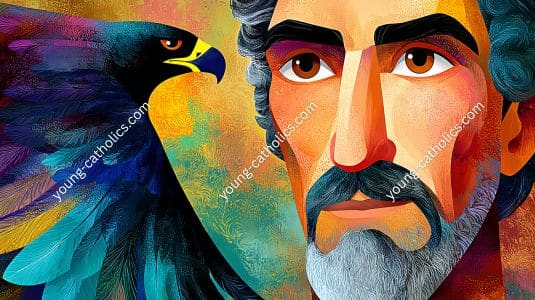
Bring the spirit of the Gospel of John into your ministry with this striking image. Perfect for bulletins, newsletters, or study materials, it highlights the vision and bold faith of the beloved apostle.
Download this artwork to inspire reflection on John’s Gospel and its message of life, truth, and love for your community.
Paid subscribers may download a large copy this digital artwork without watermarks, suitable for use in bulletins, social media, newsletters, etc., free of charge by clicking here. You must be logged in as a paid subscriber to access the file.
Only current paid subscribers have the rights to use the artwork.
Questions and Answers about the Gospel of John
Who wrote the Gospel of John?
The Gospel is linked to John, the beloved disciple of Jesus. Some think he wrote it himself. Others think his followers helped write it using his teachings.
When was it written?
Most people believe it was written between 90 and 100 AD. That was many years after Jesus had risen and returned to the Father.
Why is it different from the other Gospels?
John does not follow the same timeline. He leaves out many parables and tells different stories. He focuses more on who Jesus is than just what He did.
What are the main themes?
Some main themes are light, truth, love, and eternal life. The Gospel also talks a lot about Jesus as the Word, the Bread of Life, and the Good Shepherd.
How is it used in the Catholic Church?
We hear readings from John during Lent, Easter, and other special days. It helps us understand Jesus’ mission and His love for the Church.
Come and See
The Gospel of John tells the story of Jesus in a different way. It begins with the Word, who was with God and became flesh. This reminds us that Jesus came from God and lived among us. John wants us to believe in Jesus and have life through Him.
This Gospel includes special signs, like turning water into wine and raising Lazarus. These are meant to help people see who Jesus is. John does not tell many parables. Instead, he focuses on long talks from Jesus. These teach us about love, truth, and eternal life.
John also gives us many stories of Jesus speaking one-on-one with others. He meets people where they are. These moments show how Jesus cares for each person. They also help us learn how to follow Him.
Many Catholic themes show up in this Gospel. It teaches about the Eucharist, Baptism, and love for others. It also reminds us to stay close to Jesus and trust in His words.
Your Turn
If you haven’t read the Gospel of John before, now is a good time to start. Take your time and read a little each day. Think about what the stories and words mean for your life.
We’d love to hear what stands out to you. Did a certain passage help you? Did a story make you think in a new way? Share your thoughts in the comments and let’s learn together.


Leave a Reply